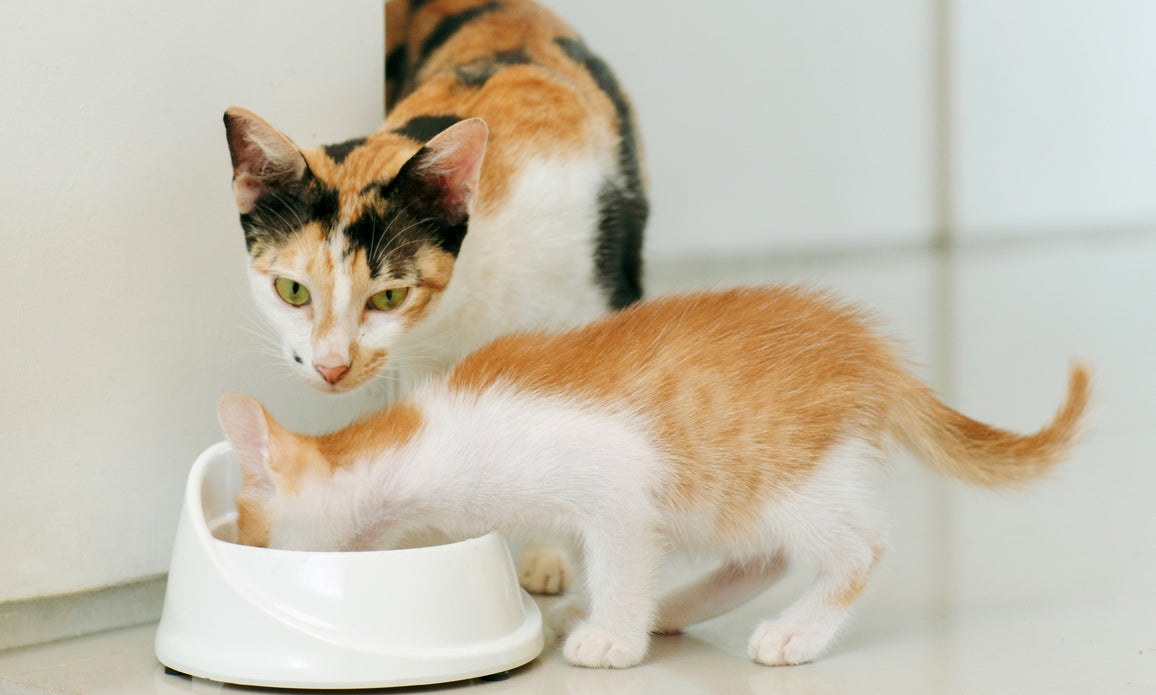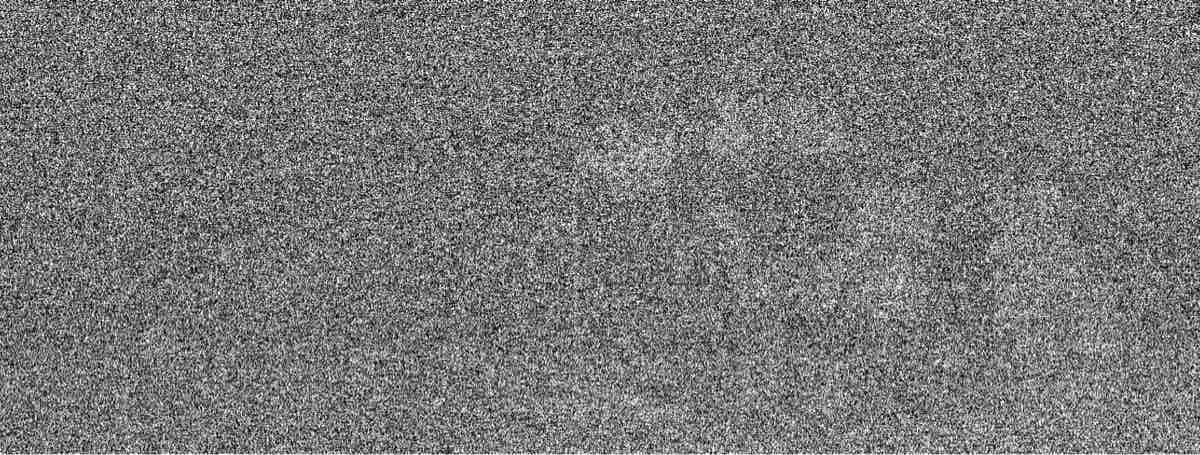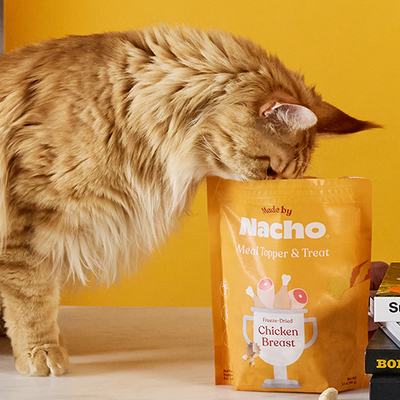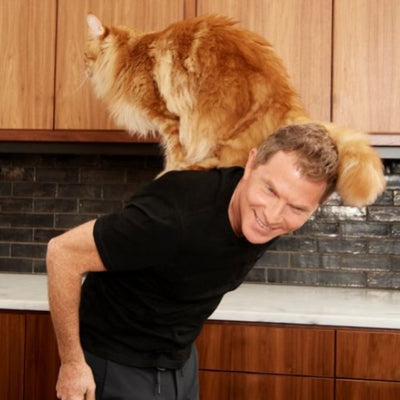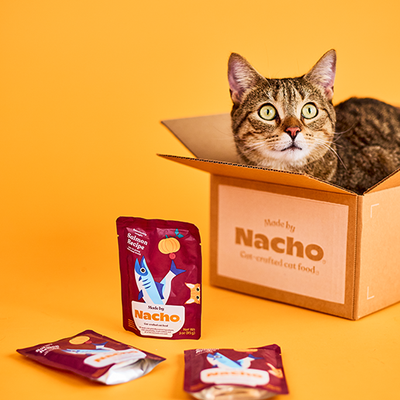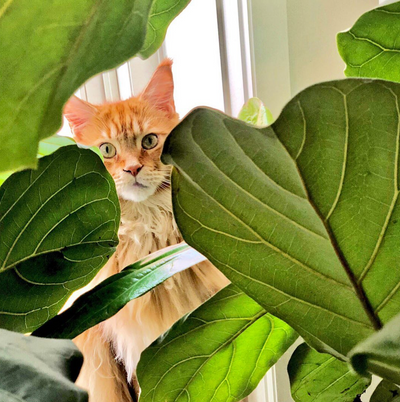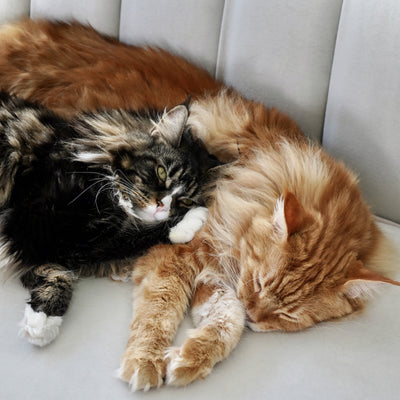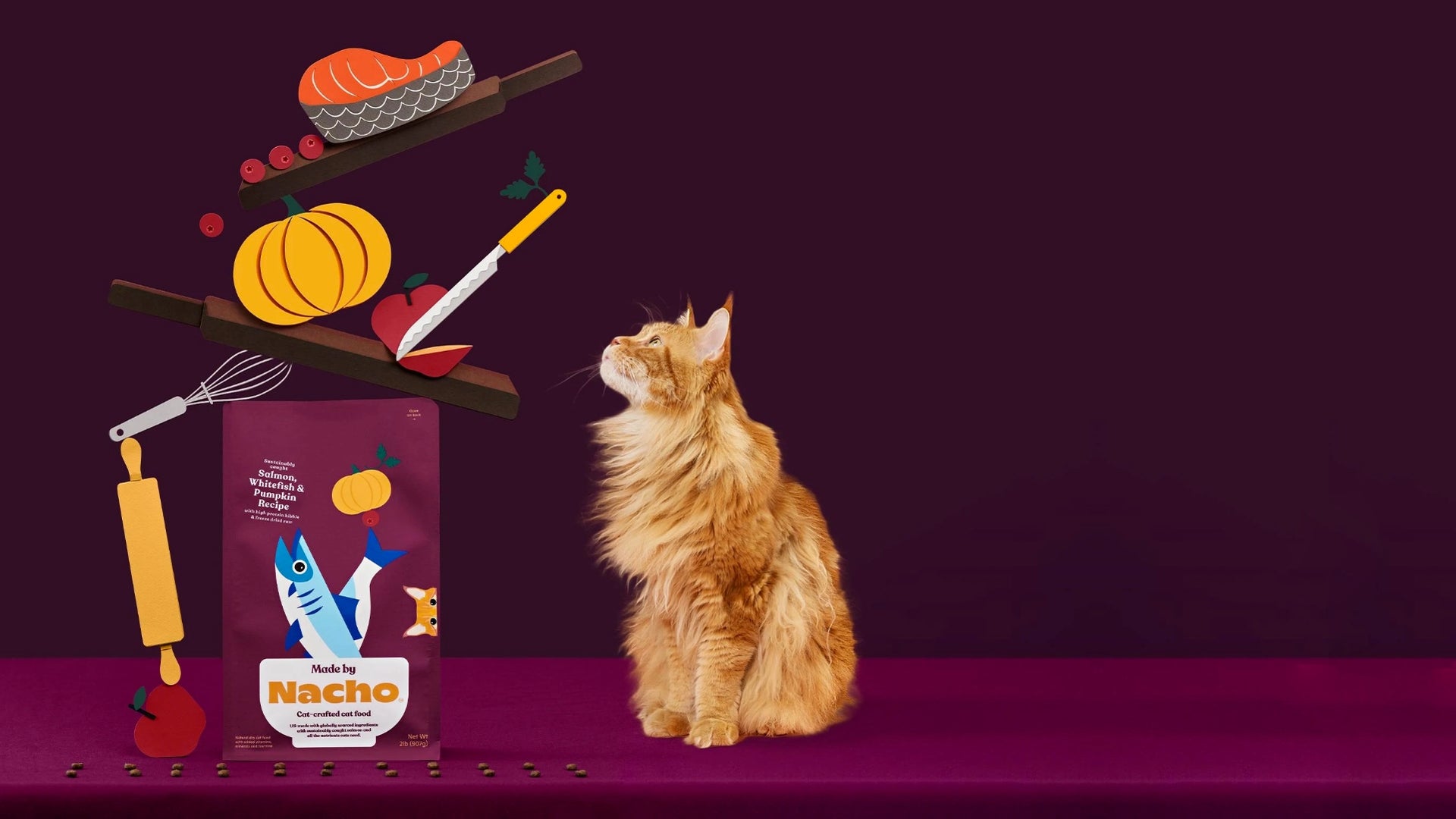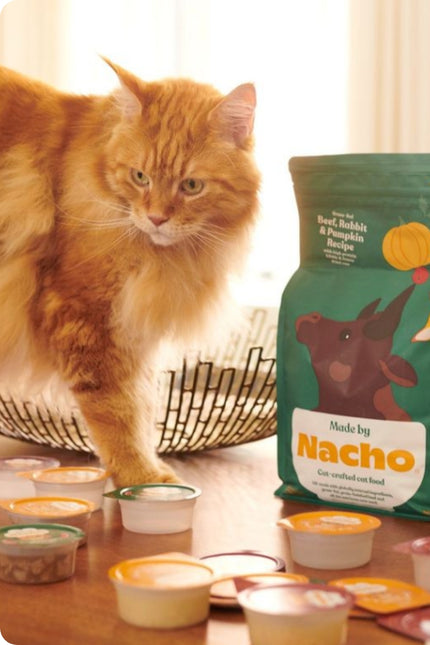We're in peak kitten season, that time of year where we see exponential growth in the number of kittens available for adoption. When it comes to food (our favorite topic!) kittens have different nutritional needs than their grown-up counterparts.
We worked with Dr. Katja Lang, Made by Nacho Veterinary Consultant, and top cat nutritionists to create our line of kitten recipes – all formulated with the protein, fat, vitamins, and minerals kittens need to thrive.
But what makes kitten food different? And how can we ensure our little ones live their best healthy lives? We asked Dr. Lang below:
Made by Nacho: What's the difference between kitten food and adult cat food?
Dr. Lang: Kitten food is generally higher in protein and fat to support kittens' rapid development. Kittens have a higher requirement of calcium and phosphorus (in addition to some other vitamins they require at higher levels) because of their growing bones. Most kitten foods will supply higher calorie content to maintain their higher metabolism as they mature.
MBN: Can kittens eat adult cat food?
DL: In my opinion, kittens should not eat adult cat food unless it's formulated for "all life stages" . I still prefer kittens to eating a diet formulated for growing kittens.
MBN: What nutritional needs do kittens have that are different from young/adult/mature cats?
DL: Kittens have higher energy, protein, fat, and mineral requirements. They need more energy and protein for growth. They use the extra fat to be able to absorb vitamins and as an added energy source. The higher mineral content is essential for bone development.
MBN: How do you introduce kitten food to your new kitten?
DL: You should gradually introduce new foods over a 7 - 10 day period to minimize the risk of gastrointestinal upset. For cats, I find it is best to introduce it as a "treat" by offering a small amount on a new plate or spoon for the first few days so they can get used to the taste and texture.
MBN: When do you transition to adult food?
DL: I will typically transition around 10-12 months of age unless you have a large breed cat (Ed note: like Nacho, a Maine coon!) that may need kitten food until 18 months.
MBN: How often should you feed your kitten?
DL: Cats in the wild eat 10-20 meals a day. The closer we can mimic this behavior, offering small meals and having them search and hunt for them, the better! There are a few options for feeding your cat.
- Meal feeding: If you choose this option, it is best to offer your kitten food every 4-6 hours (during the day) between 2-6 months. After six months, you should offer them food every 8-12 hours.
- Free choice feeding: If you choose this option, you should calculate the appropriate calories needed per day. Free choice feeding without proper monitoring can lead to obesity in cats. Some cats are good at limiting themselves to the appropriate amount of kilocalories per day, and others will overeat.
- I like to feed a combination of 1 and 2 for kittens by leaving a small amount of dry food available and offering 3-4 meals of canned food throughout the day.
MBN: How much food should you "serve" your kitten?
DL: As your kitten grows, their daily caloric intake needs will increase so it is important to follow the instructions on the cat food label. Growing cats need about 2.5 times their resting energy requirement (RER). If your kitten is spayed or neutered, remember their calorie requirement will be lower.
*MBN note: We suggest working with your vet to figure out your kitten’s specific RER (the formula is a tad complicated for a layperson) To make things easier, we created this Made by Nacho Kitten Food Feeding chart.
Kitten Food Feeding Chart
How much Made by Nacho to feed per day
|
Kitten weight (lbs) |
Kcal required per day (for growth) |
Dry food only |
Wet food only and/or |
Mixed dry & wet |
|
2 |
163 |
⅜ cup |
1 ¾ cans |
⅛ cup dry food plus ¾ -1 can wet food |
|
4 |
274 |
⅝ cup |
3 cans |
¼ -⅜ cup dry food plus 1 ½ cans wet food |
|
6 |
371 |
¾ - ⅞ cup |
4 ¼ cans |
¼ -½ cup dry food plus 2 cans wet food |
|
8 |
460 |
1 - ⅛ cup |
5 ¼ cans |
½ -⅝ cup dry food plus 2 ½ cans wet food |
|
10 |
544 |
1 ⅛ cup - 1 ¼ cup |
6 ⅛ cans |
⅝ cup dry food plus 3 cans wet food |
Have more questions about feeding your kitten or cat? Slide into our DMs on Instagram or Facebook!
